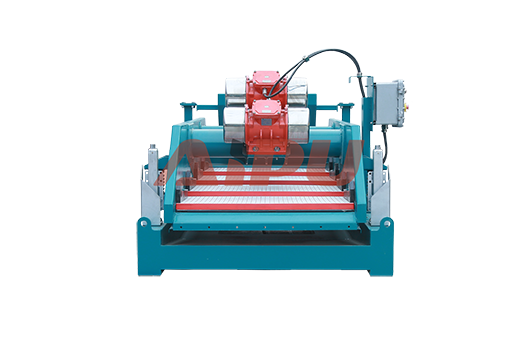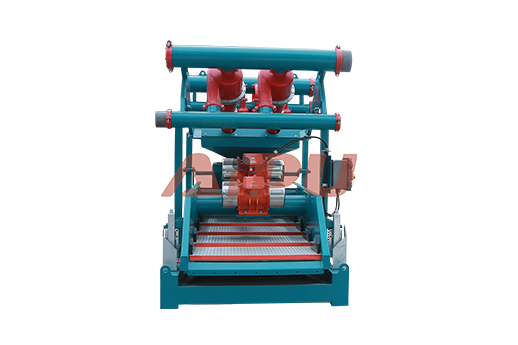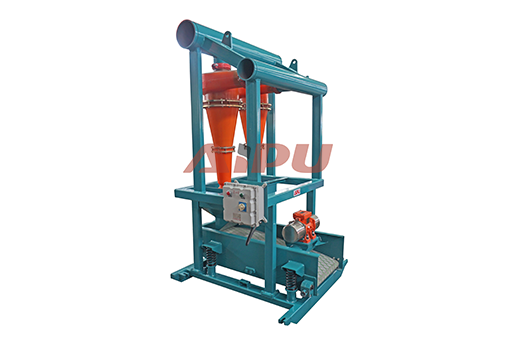Drilling mud desilter maintenance
Oilfield drilling mud desilter as 3rd stage of solids control system is used to separate solids diameter ranges from 15 to 44 microns. Usually used after desander for solids further separating.
Some maintaining methods during operating desilter
1 Operate the desilter at the recommend pressure 32 – 40 PSI.
2 As solids increase, the cones bottom can be opened slightly to help increase solids removal.
3 Check cones regularly for bottom plugging or flooding, since a plugged cone allows solids to return to the active mud system.
4 If a cone bottom plugged, unplug it with a welding rod or nail. If a cone is flooding it may need to be adjusted or the feed may be partially blocked off. It should also be inspected to make sure the cone is not worn out.
5 Operate the desilter continuously let fluid overflow back and process over & over.
A desilter’s smaller cyclones are more easily plugged with oversized solids than a desander’s cones, so it is important to inspect them for wear & plugging. This may generally be done between bores, unless a failure occurs. The feed manifold needs to be flushed & checked for debris between bores.
For more information for desilter or other solids control equipment, please focus on Aipu solids control at any time.

Some maintaining methods during operating desilter
1 Operate the desilter at the recommend pressure 32 – 40 PSI.
2 As solids increase, the cones bottom can be opened slightly to help increase solids removal.
3 Check cones regularly for bottom plugging or flooding, since a plugged cone allows solids to return to the active mud system.
4 If a cone bottom plugged, unplug it with a welding rod or nail. If a cone is flooding it may need to be adjusted or the feed may be partially blocked off. It should also be inspected to make sure the cone is not worn out.
5 Operate the desilter continuously let fluid overflow back and process over & over.
A desilter’s smaller cyclones are more easily plugged with oversized solids than a desander’s cones, so it is important to inspect them for wear & plugging. This may generally be done between bores, unless a failure occurs. The feed manifold needs to be flushed & checked for debris between bores.
For more information for desilter or other solids control equipment, please focus on Aipu solids control at any time.








